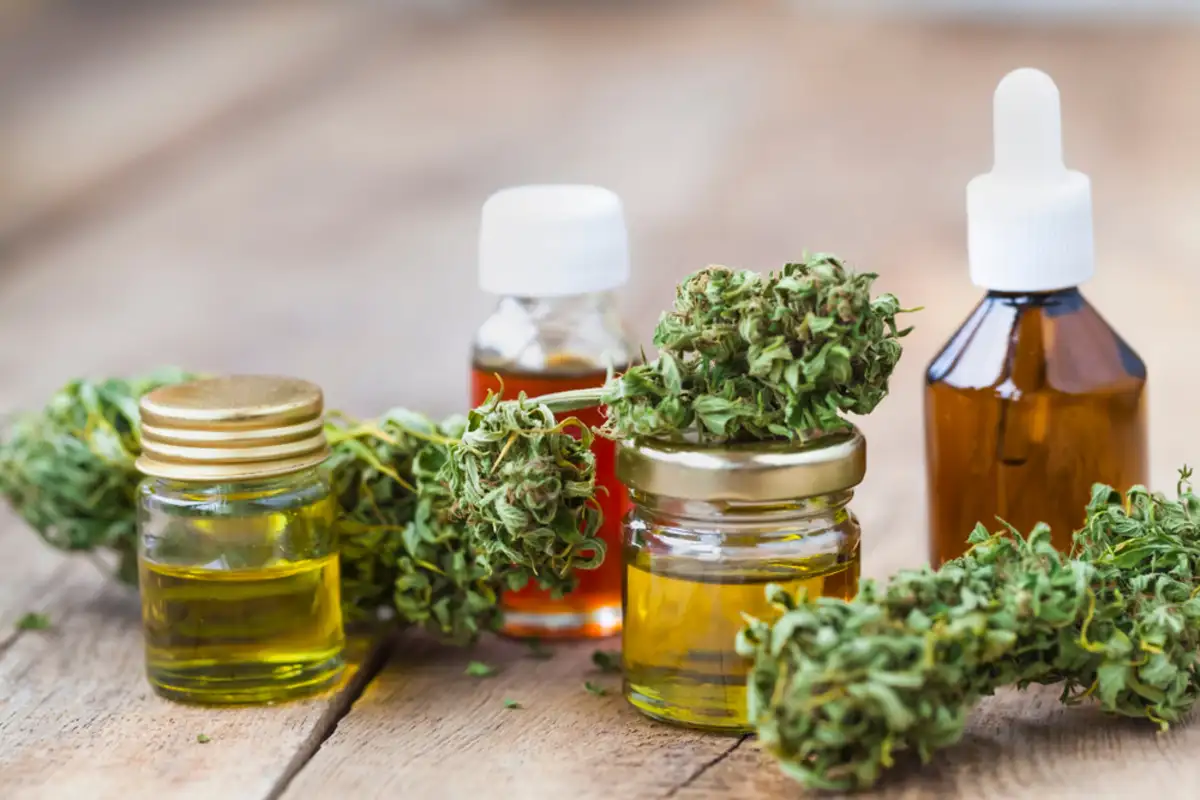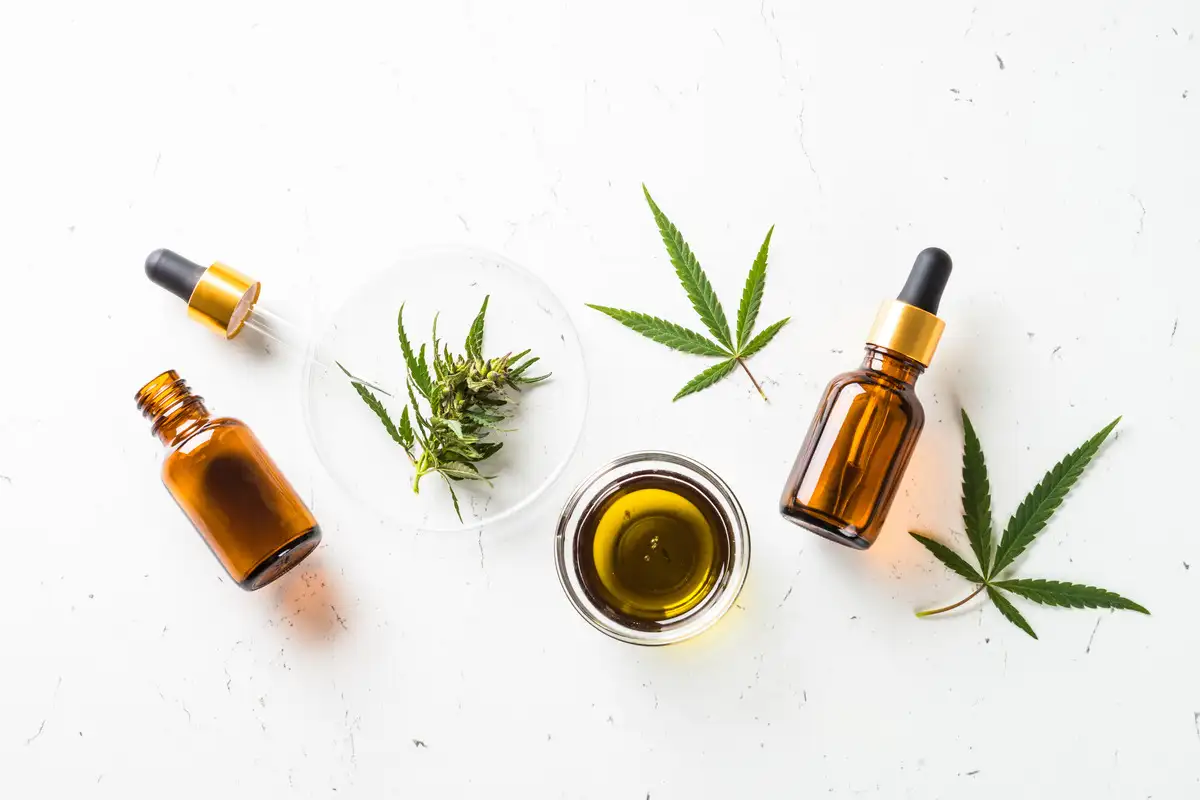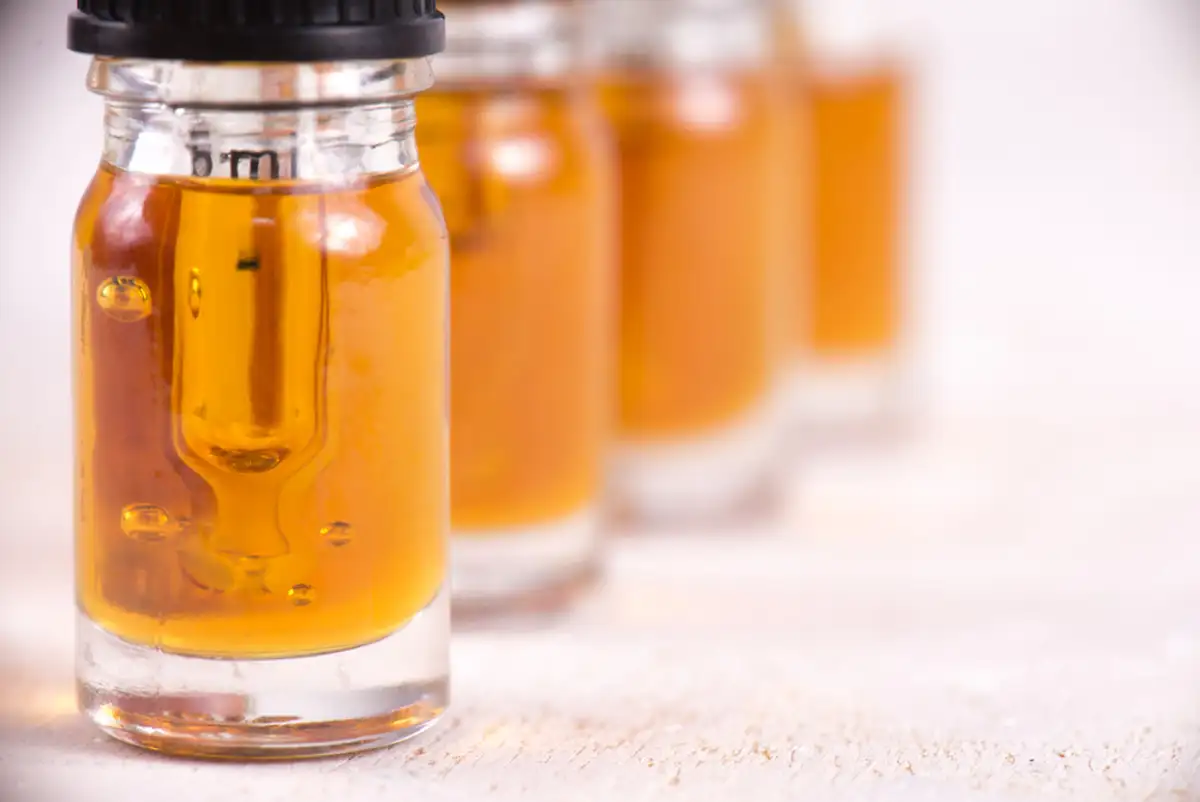With the growing acceptance and legalization of cannabis in many parts of the world, there has been a surge in interest and demand for cannabis oil. Cannabis oil, also known as CBD oil or THC oil, has gained popularity for its potential therapeutic benefits. However, what many people may not realize is that not all cannabis oils are the same. In fact, there are different strains of cannabis oil, each with their own unique properties and effects.
In this blog post, we will delve into the world of cannabis oil and explore the different strains available. We will uncover the key differences between indica and sativa strains, as well as hybrid strains which combine the characteristics of both. Understanding the different strain types is crucial as they play a significant role in the effects and benefits of the cannabis oil.
Furthermore, we will take a closer look at popular strains of cannabis oil and their specific effects. Whether you are seeking relaxation, pain relief, or a boost of creativity, knowing which strain is right for you is essential. We will also discuss the importance of THC and CBD levels in different strains and how they can influence the overall experience.
Additionally, we will explore the production process of cannabis oil, including the various extraction methods used and the role of terpenes in determining the oil’s aroma and therapeutic potential. Quality and purity considerations are also crucial when selecting a cannabis oil, and we will provide insights into what to look for to ensure you are getting a safe and effective product.
Finally, we will touch upon the medical use and legal aspects of different cannabis oil strains. While cannabis oil has shown promise in treating various medical conditions, it is important to understand the potential health benefits and risks associated with its use. We will also discuss the legal status of cannabis oil around the world, as it varies from country to country.
Whether you are new to cannabis oil or a seasoned user, this blog post will provide you with a comprehensive understanding of the different strains available. By the end, you will be equipped with the knowledge to choose the right strain for your needs, use cannabis oil safely and responsibly, and navigate the legal landscape surrounding it. So, let’s dive in and explore the fascinating world of cannabis oil strains!
Introduction: The Basics of Cannabis Oil
Cannabis oil, also known as CBD oil or THC oil, is a concentrated extract derived from the cannabis plant. It is made by extracting the cannabinoids, terpenes, and other beneficial compounds from the plant material and then suspending them in a carrier oil.
Cannabis oil has gained popularity in recent years due to its potential therapeutic benefits. It contains cannabinoids such as tetrahydrocannabinol (THC) and cannabidiol (CBD), which interact with the body’s endocannabinoid system to produce various effects.
THC is the psychoactive compound in cannabis that is responsible for the “high” sensation. On the other hand, CBD is non-psychoactive and is believed to have a range of potential health benefits, such as reducing pain, inflammation, anxiety, and aiding in sleep.
Cannabis oil comes in various forms, including tinctures, capsules, topicals, and vape cartridges. Each form has its own benefits and may be used for different purposes. It is important to note that cannabis oil should be used responsibly and in accordance with legal regulations in your jurisdiction.
In the following sections, we will delve deeper into the different strains of cannabis oil and how they can influence the overall experience. We will explore the characteristics of indica, sativa, and hybrid strains, as well as their respective effects. Understanding these strain types is vital for selecting the right cannabis oil to suit your needs and preferences.
So, whether you are seeking relief from pain, relaxation, or an uplifted mood, understanding the basics of cannabis oil is the first step towards finding the perfect strain for you. Let’s continue our exploration of cannabis oil strains and uncover the fascinating world of cannabis-derived extracts.
 Understanding the Cannabis Plant: Sativa, Indica, and Hybrid
Understanding the Cannabis Plant: Sativa, Indica, and Hybrid
When it comes to understanding the different strains of cannabis oil, it is essential to have a basic understanding of the cannabis plant itself. Cannabis plants are typically classified into three main categories: sativa, indica, and hybrid. Each category has distinct characteristics and effects, which ultimately influence the qualities of the cannabis oil derived from them.
Key Differences Between Indica and Sativa
Indica and sativa are two primary species of the cannabis plant, each with its own unique set of characteristics. Understanding the differences between the two can help you determine the effects you may experience from consuming cannabis oil.
Indica: Indica plants are typically shorter and bushier compared to sativa plants. They have broader leaves and tend to grow in colder climates. Indica strains are known for their relaxing and sedating effects, making them popular for nighttime use or for those seeking relief from pain, insomnia, or anxiety. Indica strains are often associated with a “body high” that can leave users feeling physically relaxed and mentally calm.
Sativa: Sativa plants, on the other hand, are taller and have narrower leaves. They thrive in warmer climates and have a longer flowering period. Sativa strains are known for their energizing and uplifting effects, making them popular for daytime use or for those looking for a creative boost. Sativa strains are often associated with a “head high” that can enhance focus, creativity, and sociability.
It is important to note that while indica and sativa strains have these general tendencies, the effects can vary depending on the specific strain and individual differences in tolerance and metabolism.
What are Hybrid Strains?
Hybrid strains are created by crossbreeding indica and sativa plants, resulting in offspring with characteristics inherited from both parent strains. Hybrid strains are known for their ability to provide a balanced experience, combining the effects of both indica and sativa strains.
Hybrids can be further classified into three categories:
- Indica-dominant hybrids: These strains have a higher percentage of indica genetics, resulting in a more pronounced relaxing and sedating effect. They may still exhibit some energizing qualities inherited from the sativa parent.
- Sativa-dominant hybrids: These strains have a higher percentage of sativa genetics, leading to a more uplifting and cerebral effect. They may still retain some of the physical relaxation associated with indica strains.
- Balanced hybrids: These strains have an equal balance of indica and sativa genetics, providing a harmonious blend of both relaxing and uplifting effects.
Hybrids offer a wide range of possibilities, allowing individuals to find strains that cater to their specific needs and preferences.
Understanding the different strain types of the cannabis plant is crucial in selecting the right cannabis oil for your desired effects. In the next section, we will explore how strain types influence the characteristics and benefits of cannabis oil.
Exploring the Different Strains of Cannabis Oil
As we delve into understanding the different strains of cannabis oil, it is important to explore the various options available and their specific effects. Each strain possesses unique characteristics and qualities that contribute to the overall experience when consuming cannabis oil. Let’s take a closer look at the popular strains and their effects.
Popular Strains and Their Effects
- OG Kush: OG Kush is a well-known and highly sought-after strain. It is an indica-dominant hybrid that offers a potent and relaxing experience. OG Kush is often praised for its ability to relieve stress, promote relaxation, and provide pain relief. It may also induce a sense of euphoria and uplifted mood.
- Jack Herer: Jack Herer is a sativa-dominant strain named after the renowned cannabis activist. It is beloved for its energizing and uplifting effects. Jack Herer can enhance creativity, boost focus, and promote a sense of well-being. It is often used by individuals seeking an uplifting daytime experience.
- Blue Dream: Blue Dream is a popular hybrid strain known for its balanced effects. It combines the relaxation and pain-relieving qualities of indica with the cerebral stimulation of sativa. Blue Dream is often described as providing a gentle and euphoric high, making it a favorite among both recreational and medical users.
- Girl Scout Cookies: Girl Scout Cookies, also known as GSC, is a hybrid strain with a slightly indica-dominant profile. It is cherished for its potent and long-lasting effects. GSC offers a combination of euphoria, relaxation, and creativity. It is often used to alleviate stress, pain, and insomnia.
- Sour Diesel: Sour Diesel is a sativa-dominant strain famous for its energizing and mood-enhancing effects. It is known to provide a burst of energy, increase focus, and uplift the spirits. Sour Diesel is often chosen by those seeking a daytime strain to combat fatigue and promote productivity.
These are just a few examples of popular cannabis strains and their effects. It is important to note that individual experiences may vary, and the effects of each strain can depend on factors such as dosage, tolerance, and personal chemistry.
How to Choose the Right Strain for You
When selecting a strain of cannabis oil, it is crucial to consider your personal preferences, desired effects, and any specific therapeutic needs. Here are some factors to consider when choosing the right strain for you:
- Desired Effects: Determine what type of experience you are looking for. Do you want to relax and unwind, boost your creativity, or find relief from pain or anxiety? Different strains offer different effects, so knowing what you want to achieve can guide your selection.
- THC and CBD Levels: Pay attention to the THC and CBD levels in the strain. THC is the psychoactive compound responsible for the “high” sensation, while CBD is non-psychoactive and is associated with potential therapeutic benefits. Understanding the THC and CBD ratios can help you find a strain that aligns with your preferences and needs.
- Aroma and Flavor: Consider the aroma and flavor profiles of different strains. Some people have preferences for certain smells or tastes, so exploring strains with appealing aromas or flavors can enhance your overall experience.
- Medical Conditions: If you are using cannabis oil for medical purposes, consult with a healthcare professional to determine strains that may be beneficial for your specific condition. Certain strains have been reported to provide relief for conditions such as chronic pain, inflammation, epilepsy, and more.
By considering these factors, you can narrow down the options and choose a strain of cannabis oil that aligns with your preferences and needs.
Understanding THC and CBD Levels in Different Strains
THC and CBD levels play a significant role in the effects and benefits of cannabis oil. THC is the primary psychoactive compound in cannabis, while CBD is non-intoxicating and has potential therapeutic properties. The ratio of THC to CBD can greatly influence the overall experience when consuming cannabis oil.
- High-THC Strains: Strains with high levels of THC are known for their potent psychoactive effects. They can induce a strong euphoric high, relaxation, and sometimes sedation. High-THC strains are often chosen by recreational users seeking a more intense experience or by individuals looking for relief from pain, nausea, or insomnia.
- High-CBD Strains: Strains with high levels of CBD are valued for their potential therapeutic benefits. CBD has been reported to have anti-inflammatory, analgesic, anxiolytic, and anticonvulsant properties. High-CBD strains are often chosen by individuals seeking relief from conditions such as anxiety, epilepsy, and chronic pain, without the psychoactive effects associated with THC.
- Balanced THC:CBD Strains: Some strains are bred to have a balanced ratio of THC to CBD, offering a combination of both psychoactive and therapeutic effects. These strains are often chosen by individuals who want to experience the benefits of both compounds without the extreme highs or sedation associated with high-THC strains.
Understanding the THC and CBD levels in different strains can help you choose a cannabis oil that suits your desired effects, whether you are seeking a recreational experience or using it for medicinal purposes.
In the next section, we will explore the production process of cannabis oil, including the various extraction methods used and the role of terpenes in determining the oil’s aroma and therapeutic potential.
The Production Process of Cannabis Oil
The production process of cannabis oil involves several key steps, including extraction methods, the role of terpenes, and considerations for quality and purity. Understanding this process is important for ensuring the safety and effectiveness of the cannabis oil you consume. Let’s explore these aspects in more detail.
Extraction Methods
There are various methods used to extract cannabinoids and other beneficial compounds from the cannabis plant material. The choice of extraction method can impact the quality, potency, and overall profile of the resulting cannabis oil. Some common extraction methods include:
- Solvent-based extraction: This method involves using a solvent, such as ethanol or butane, to dissolve the cannabinoids and other compounds from the plant material. The solvent is then evaporated, leaving behind the concentrated oil. However, it is important to ensure proper purging to remove any residual solvents.
- CO2 extraction: CO2 extraction is a popular method that uses pressurized carbon dioxide to extract cannabinoids. This method allows for precise control over temperature and pressure, resulting in a clean and high-quality oil. CO2 extraction is commonly used in commercial cannabis oil production.
- Rosin press extraction: This method involves using heat and pressure to extract cannabinoids from the plant material. It is a solventless extraction method that produces a potent and flavorful oil. Rosin press extraction is often preferred by individuals who want to create their own cannabis oil at home.
Each extraction method has its own advantages and considerations, such as cost, scalability, and safety. It is important to choose a cannabis oil that has been extracted using a method that prioritizes quality and safety.
The Role of Terpenes
Terpenes are aromatic compounds found in the essential oils of plants, including cannabis. They contribute to the distinctive aromas and flavors of different cannabis strains and also have potential therapeutic properties. Terpenes work synergistically with cannabinoids like THC and CBD to enhance the overall effects of cannabis oil. Some common terpenes found in cannabis include:
- Limonene: Limonene is known for its citrusy aroma and is associated with mood elevation and stress relief.
- Myrcene: Myrcene has an earthy and musky aroma and is believed to have sedative and relaxing effects.
- Pinene: Pinene has a pine-like aroma and is associated with increased focus and alertness.
Understanding the role of terpenes can help you choose a cannabis oil that aligns with your desired effects and flavor preferences. Some manufacturers may include terpene profiles on their product labels to provide more information about the specific terpenes present in the oil.
Quality and Purity Considerations
When selecting a cannabis oil, it is important to consider the quality and purity of the product. Here are some key factors to consider:
- Source and Cultivation: Ensure that the cannabis plants used for extraction are grown in a controlled environment and free from pesticides, herbicides, and other contaminants. Look for products that provide information about the source and cultivation practices.
- Third-Party Testing: Look for cannabis oils that have undergone third-party testing for potency, purity, and safety. These tests can verify the cannabinoid profile, terpene content, and the absence of harmful contaminants.
- Product Labels: Check the product labels for information about THC and CBD levels, terpene profiles, and other relevant details. Transparent labeling demonstrates the manufacturer’s commitment to quality and provides you with essential information to make an informed decision.
- Extraction Method: Consider the extraction method used to produce the cannabis oil. Methods like CO2 extraction are generally considered to be safer and produce higher-quality oils compared to solvent-based extraction methods.
By considering these factors, you can ensure that you are selecting a high-quality and safe cannabis oil that meets your needs.
In the next section, we will explore the medical use and legal aspects of different cannabis oil strains. We will discuss potential health benefits and risks, as well as the legal status of cannabis oil around the world.
Medical Use and Legal Aspects of Different Cannabis Oil Strains
The medical use and legal aspects of different cannabis oil strains are important considerations when exploring the world of cannabis oil. While cannabis oil has shown promise in treating various medical conditions, it is essential to understand the potential health benefits and risks associated with its use. Additionally, the legal status of cannabis oil varies from country to country. Let’s delve into these aspects in more detail.
Potential Health Benefits and Risks
- Pain Relief: Cannabis oil, particularly strains with higher levels of THC, has been reported to provide relief from chronic pain, neuropathic pain, and inflammatory conditions. The cannabinoids in cannabis oil interact with the body’s endocannabinoid system, which plays a role in regulating pain perception.
- Anxiety and Depression: Some individuals find cannabis oil, especially strains with higher levels of CBD, to be helpful in managing symptoms of anxiety and depression. CBD has been reported to have potential anti-anxiety and antidepressant properties.
- Nausea and Vomiting: Cannabis oil, specifically strains with higher levels of THC, has been used to alleviate nausea and vomiting associated with chemotherapy and other medical treatments.
- Epilepsy and Seizure Disorders: CBD-rich cannabis oil has gained attention for its potential anti-seizure properties. Some specific strains have shown promising results in reducing the frequency and severity of seizures in certain forms of epilepsy.
It is important to note that the efficacy of cannabis oil in treating medical conditions can vary from individual to individual. It is recommended to consult with a healthcare professional before using cannabis oil for medical purposes, especially if you have underlying health conditions or are taking other medications.
Alongside the potential health benefits, it is also crucial to consider the potential risks associated with cannabis oil use. These may include:
- Psychoactive Effects: Cannabis oil containing higher levels of THC can cause psychoactive effects, including euphoria, altered perception, and impaired coordination. These effects can vary depending on the dosage, strain, and individual tolerance.
- Memory and Cognitive Function: Heavy and prolonged cannabis oil use, particularly in adolescence, has been associated with potential impacts on memory, learning, and cognitive function. It is important to use cannabis oil responsibly and in moderation.
- Respiratory Risks: Smoking or vaporizing cannabis oil can pose risks to respiratory health, similar to smoking other substances. If inhalation is the chosen method of consumption, it is advisable to use proper smoking or vaporizing techniques and consider alternative methods, such as edibles or tinctures.
Legal Status of Cannabis Oil Around the World
The legal status of cannabis oil varies significantly from country to country. In some places, cannabis and cannabis-derived products are fully legalized and regulated, allowing for the production, sale, and use of cannabis oil. In other regions, cannabis and its derivatives may be strictly prohibited or only allowed for medical use under specific conditions.
It is important to be aware of the legal regulations regarding cannabis oil in your area. This includes understanding the allowable THC and CBD limits, possession limits, and any requirements for medical authorization or licensing. Failure to comply with local laws can result in legal consequences.
If you are considering using cannabis oil for medical purposes, it is essential to research and understand the legal framework in your jurisdiction. Consult with a healthcare professional to ensure compliance with local regulations and to obtain appropriate guidance on safe and responsible use.
How to Use Cannabis Oil Safely and Responsibly
To use cannabis oil safely and responsibly, consider the following guidelines:
- Start Low and Go Slow: Begin with a low dosage and gradually increase as needed. This allows you to gauge your tolerance and find the optimal dosage for your desired effects.
- Know Your Limits: Understand your personal limits and be mindful of the potency of the cannabis oil you are consuming. Different strains and products may have varying levels of THC and CBD, which can affect your experience.
- Consider Method of Consumption: Choose a method of consumption that aligns with your preferences and health considerations. Options include smoking, vaporizing, edibles, tinctures, and topicals. Each method has its own onset time, duration of effects, and potential risks.
- Store Safely: Keep cannabis oil products out of reach of children and pets. Store them in a cool, dry place away from direct sunlight to maintain their potency and quality.
- Educate Yourself: Stay informed about the latest research, regulations, and best practices regarding cannabis oil use. This will help you make informed decisions and ensure responsible use.
By following these guidelines, you can use cannabis oil safely and responsibly, maximizing its potential benefits while minimizing potential risks.
As we conclude this comprehensive blog post on understanding the different strains of cannabis oil, we hope that you have gained valuable insights into the world of cannabis oil. From exploring the characteristics of sativa, indica, and hybrid strains to understanding the production process, potential health benefits, and legal aspects, you are now equipped with the knowledge to make informed decisions when selecting and using cannabis oil.
Remember, it is always important to consult with healthcare professionals and comply with local regulations to ensure safe and responsible use of cannabis oil. Whether you are seeking relaxation, pain relief, or therapeutic benefits, understanding the different strains and their effects will guide you in finding the cannabis oil that suits your needs and preferences.
Enjoy your exploration of the fascinating world of cannabis oil strains, and may it bring you the desired experiences and potential benefits you seek.



 Understanding the Cannabis Plant: Sativa, Indica, and Hybrid
Understanding the Cannabis Plant: Sativa, Indica, and Hybrid


